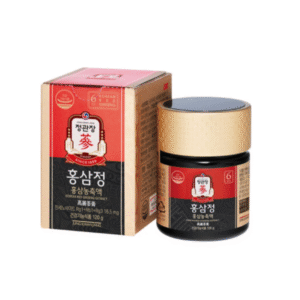High blood pressure — or hypertension — is one of the world’s most common cardiovascular conditions, affecting nearly one in three adults globally. Often called the “silent killer”, it can go unnoticed for years while quietly damaging arteries and vital organs.
While modern medicine offers effective drugs for controlling blood pressure, many people are exploring natural solutions that support cardiovascular balance and overall vitality. Among the most researched herbal options is Korean Red Ginseng (Panax ginseng C.A. Meyer) — a traditional adaptogen known for promoting circulation, heart health, and blood vessel flexibility.
Modern studies have found that Korean Red Ginseng may help normalize blood pressure, whether it is too high or too low, making it a valuable natural regulator of cardiovascular function.
1. Understanding Hypertension and Its Risks
Blood pressure measures the force of blood pushing against artery walls. When this pressure remains consistently high (above 130/80 mmHg), it can lead to complications such as:
- Atherosclerosis (arterial hardening)
- Heart attack and stroke
- Kidney damage
- Vision problems
The underlying causes often include oxidative stress, inflammation, poor circulation, and overactivation of the sympathetic nervous system. Korean Red Ginseng addresses these root causes holistically.
👉 Reference: American Heart Association – Understanding Blood Pressure
2. How Korean Red Ginseng Helps Balance Blood Pressure
Korean Red Ginseng contains over 30 types of active compounds called ginsenosides, which influence cardiovascular and nervous system function.
Its effects on blood pressure are described as “bidirectional regulation” — meaning it helps raise low blood pressure and lower high blood pressure depending on the body’s needs.
Here’s how it works:
- 💓 Improves Blood Vessel Elasticity
Ginsenosides enhance the production of nitric oxide (NO) in endothelial cells, relaxing blood vessels and improving circulation. This helps lower elevated blood pressure naturally. - ⚖️ Balances the Autonomic Nervous System
Ginseng stabilizes the body’s stress response, reducing excessive sympathetic activity (the “fight or flight” mechanism) that often contributes to hypertension. - 🧠 Enhances Oxygen and Nutrient Flow
By improving microcirculation and reducing oxidative stress, it supports a healthier vascular network and reduces heart strain.
3. Scientific Studies on Ginseng and Blood Pressure
Several human and animal studies have validated the cardiovascular effects of Korean Red Ginseng:
- A clinical study in The Journal of Hypertension (2014) found that adults taking 1,500 mg of Korean Red Ginseng daily for 12 weeks experienced a significant reduction in systolic blood pressure and improved arterial flexibility.
- A 2018 review in the Journal of Ginseng Research confirmed that ginseng’s nitric oxide–boosting activity helps relax vascular smooth muscles, improving blood flow and reducing hypertension risk.
- Another study published in Phytomedicine (2020) showed that the ginsenoside Rg3 acts as a natural ACE inhibitor, helping to control blood pressure similarly to certain prescription medications — but without the side effects.
These findings confirm that Korean Red Ginseng supports healthy vascular tone and pressure regulation through multiple biological mechanisms.
4. Ginseng’s Role in Stress and Hormonal Balance
Hypertension is often linked to chronic stress, which raises cortisol and adrenaline levels — hormones that tighten blood vessels and increase heart rate.
Korean Red Ginseng is classified as an adaptogen, meaning it helps the body adapt to stress by balancing the hypothalamic-pituitary-adrenal (HPA) axis.
Benefits include:
- Lowering cortisol spikes caused by stress
- Improving sleep and relaxation
- Reducing sympathetic overdrive that contributes to hypertension
By addressing the stress factor, ginseng provides a holistic, long-term approach to blood pressure management rather than just a temporary fix.
5. Supporting Heart and Artery Health
Beyond regulating pressure, Korean Red Ginseng helps maintain a healthy cardiovascular system by:
- Reducing oxidative damage to arterial walls
- Improving cholesterol balance (lower LDL, raise HDL)
- Preventing arterial inflammation and stiffness
- Enhancing blood flow to the heart and brain
Together, these actions protect against atherosclerosis, heart failure, and stroke, making ginseng an ideal supplement for those concerned about heart wellness.
6. How to Take Korean Red Ginseng for Blood Pressure Support
| Form | Recommended Use | Benefit |
|---|---|---|
| Capsules/Tablets | 500–1000 mg daily | Convenient and consistent dosage |
| Liquid Extract or Tonic | 1–2 teaspoons/day | Fast absorption and circulation support |
| Powder/Tea | Mix with warm water | Gentle, daily cardiovascular support |
| Combination Formulas | With hawthorn or garlic | Synergistic heart and vascular protection |
Tip: Take in the morning to avoid potential insomnia and for better energy during the day.
7. Safety and Precautions
Korean Red Ginseng is considered safe for most adults when taken at recommended doses. However:
- Those taking antihypertensive drugs, blood thinners, or diabetic medications should consult a healthcare professional before use.
- Avoid excessive intake, as overstimulation may occur in sensitive individuals.
- Pregnant or breastfeeding women should use under medical advice.
8. Final Thoughts
Korean Red Ginseng offers a scientifically supported, natural approach to blood pressure regulation.
Through its vasodilating, antioxidant, and adaptogenic properties, it helps improve circulation, calm stress responses, and promote heart health without drastically altering blood pressure levels.
When combined with a balanced diet, regular exercise, and good sleep, Korean Red Ginseng can be a valuable ally for hypertension management and long-term cardiovascular wellness.
🇰🇷 Premium Korean Ginseng Online Shop







